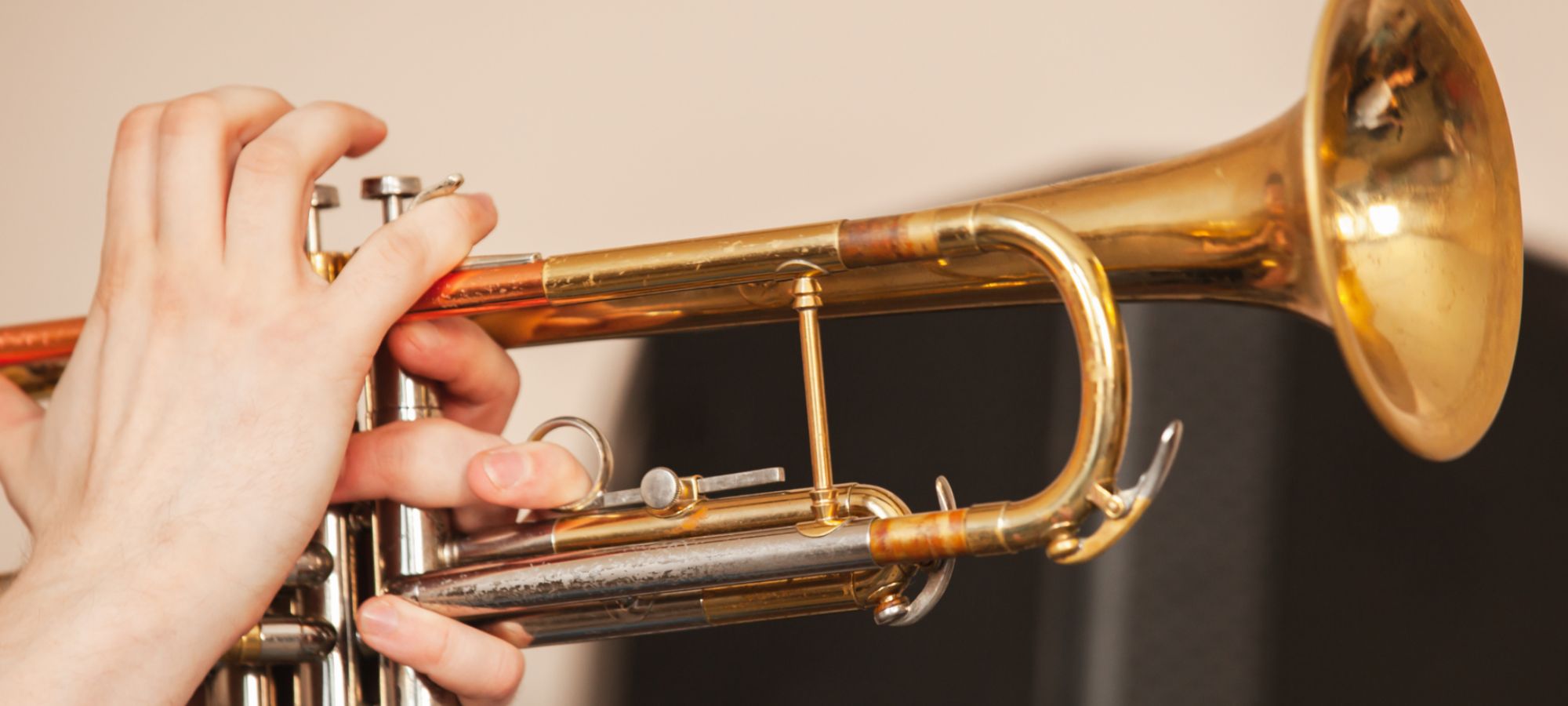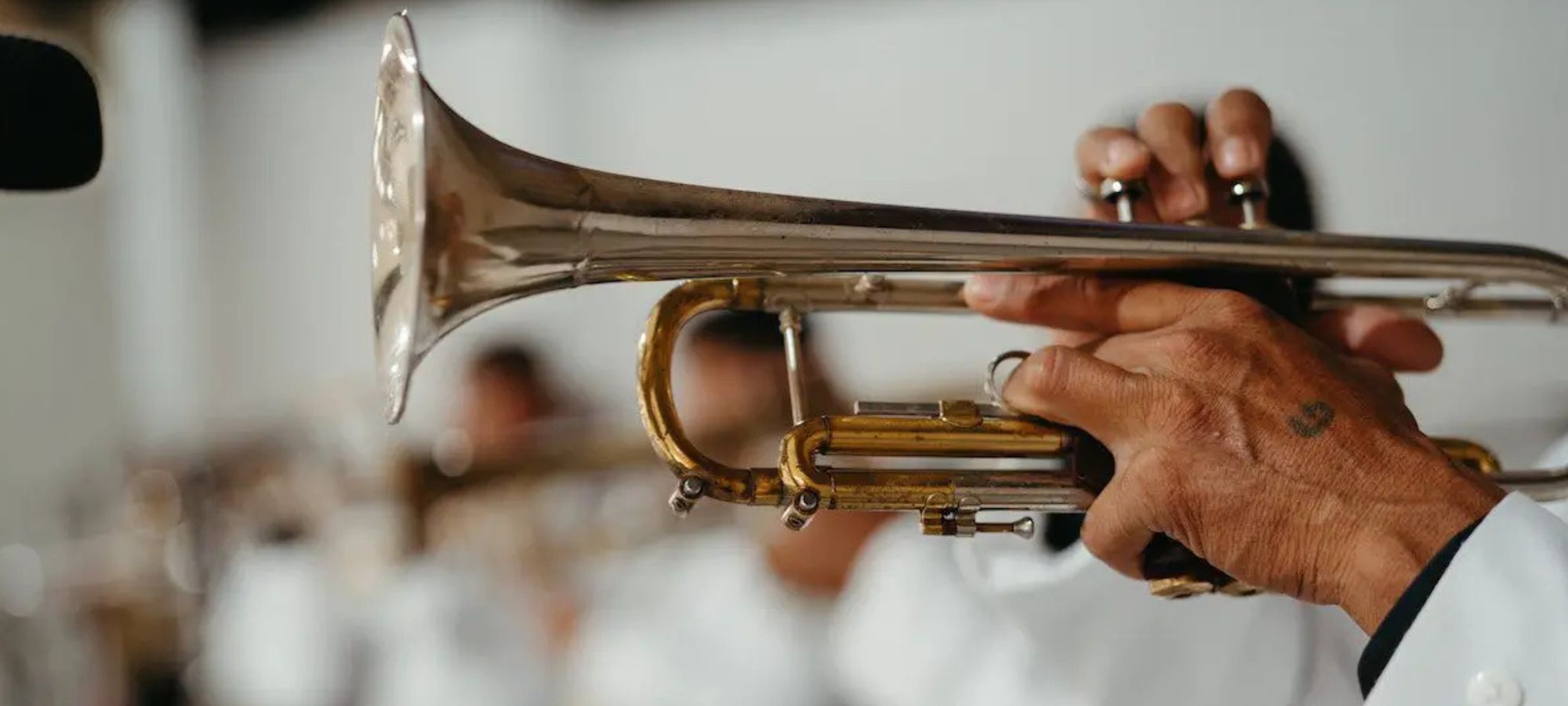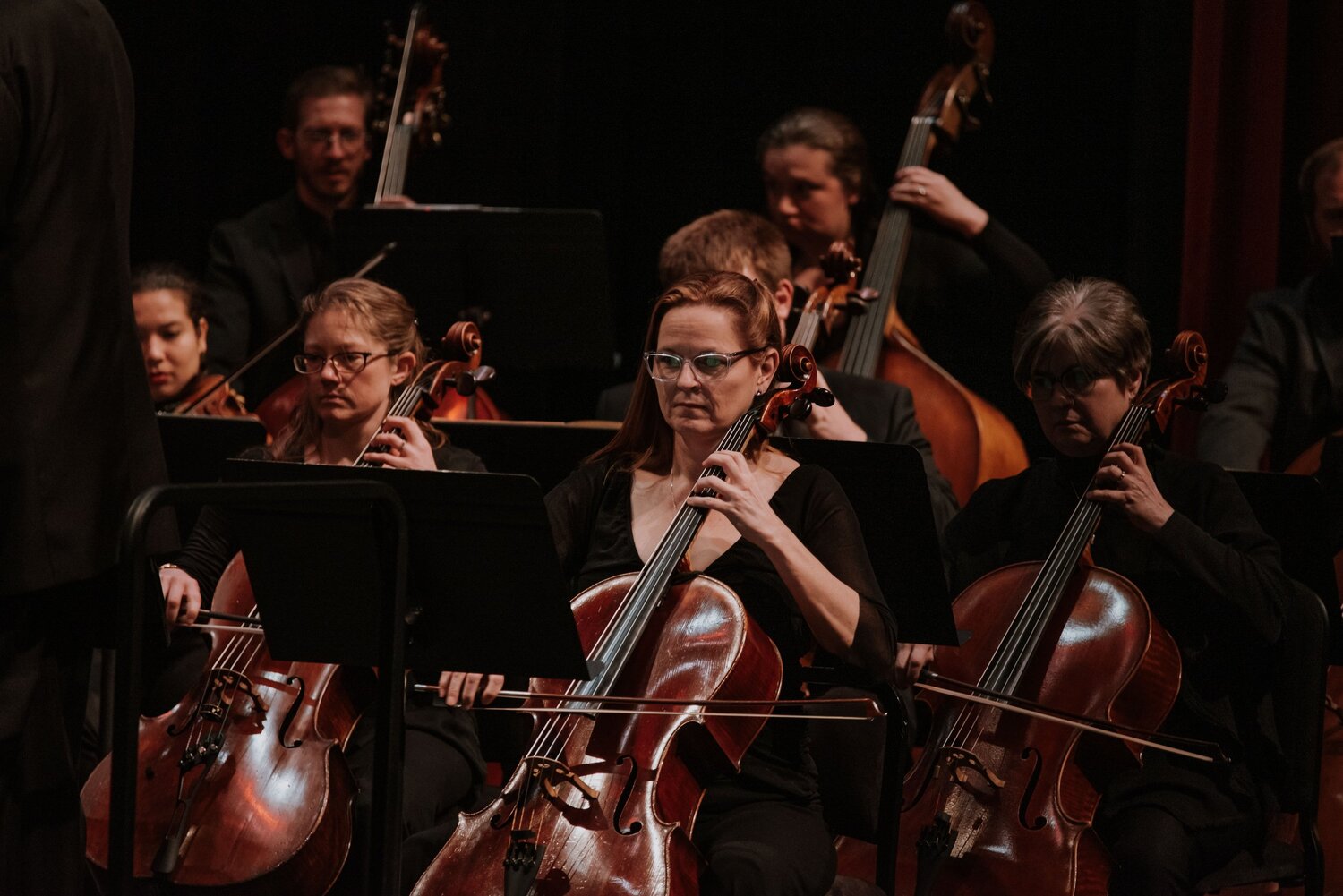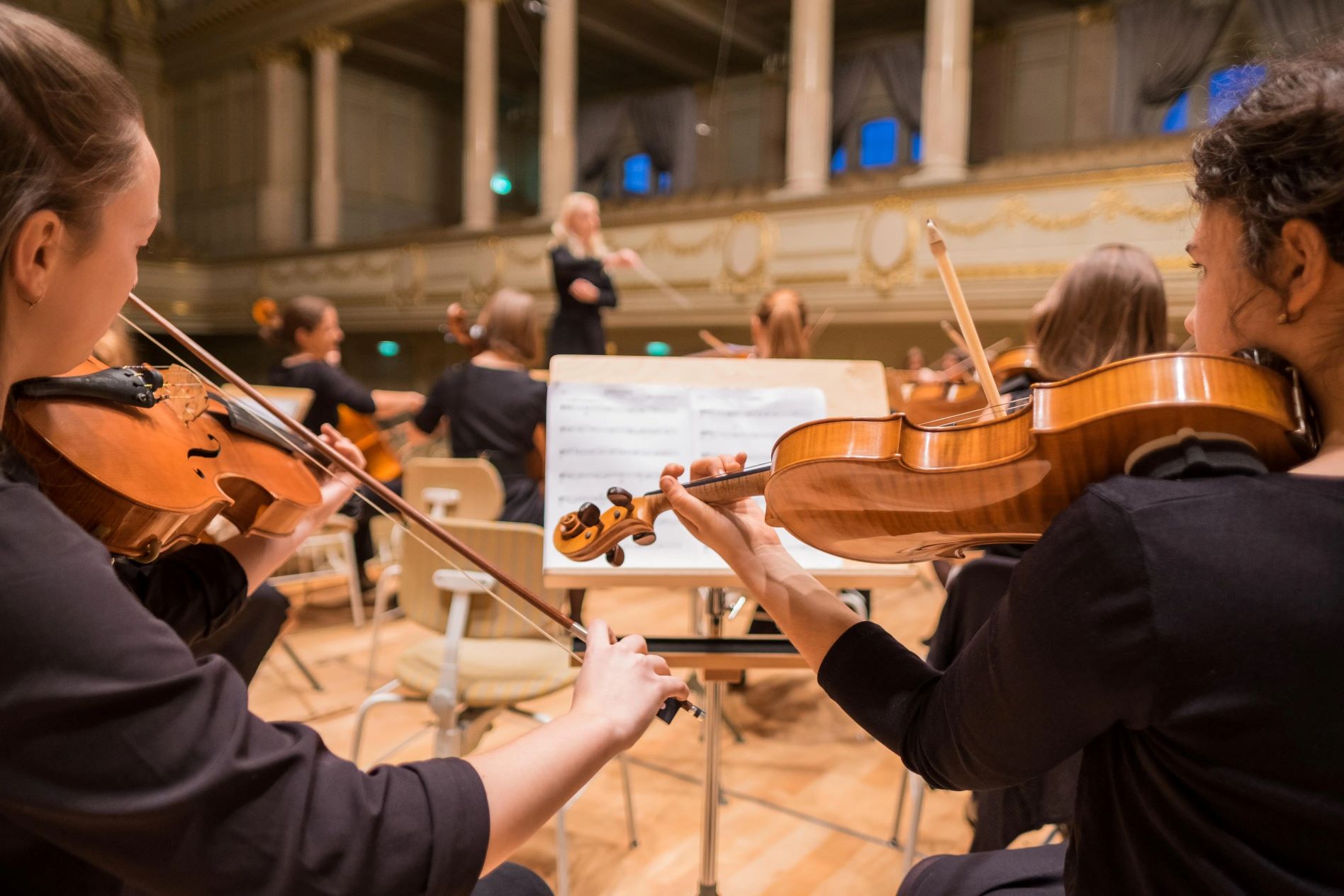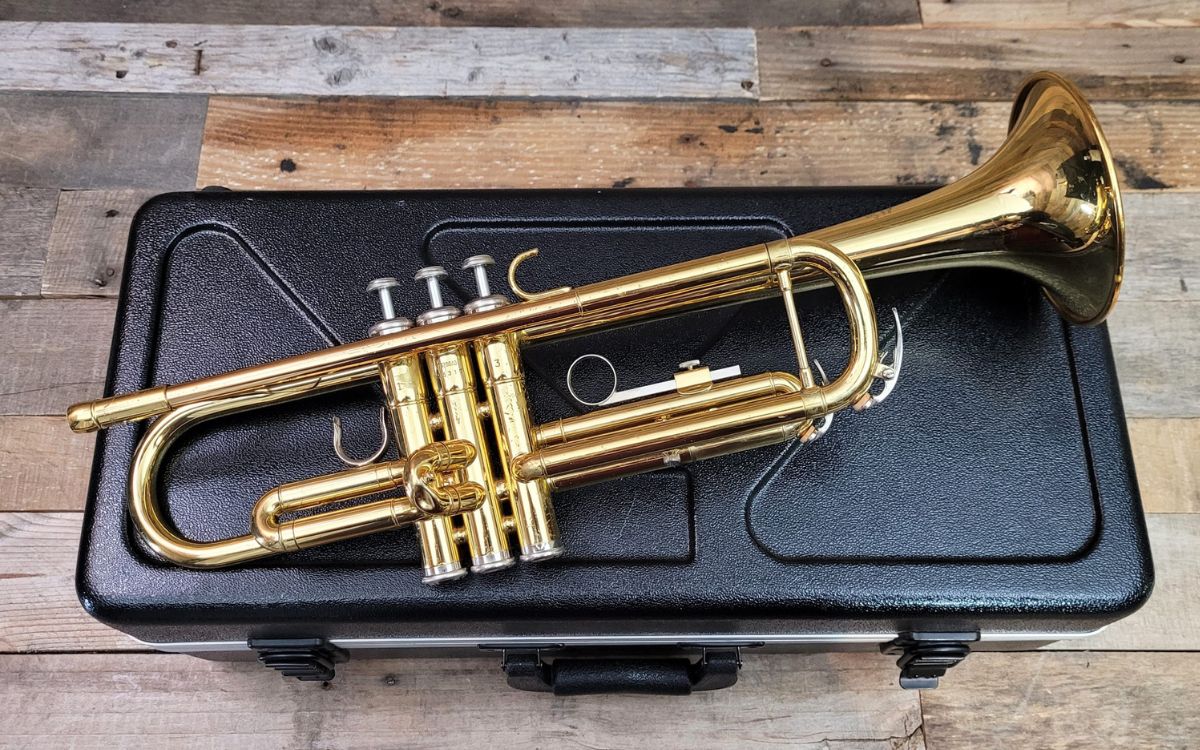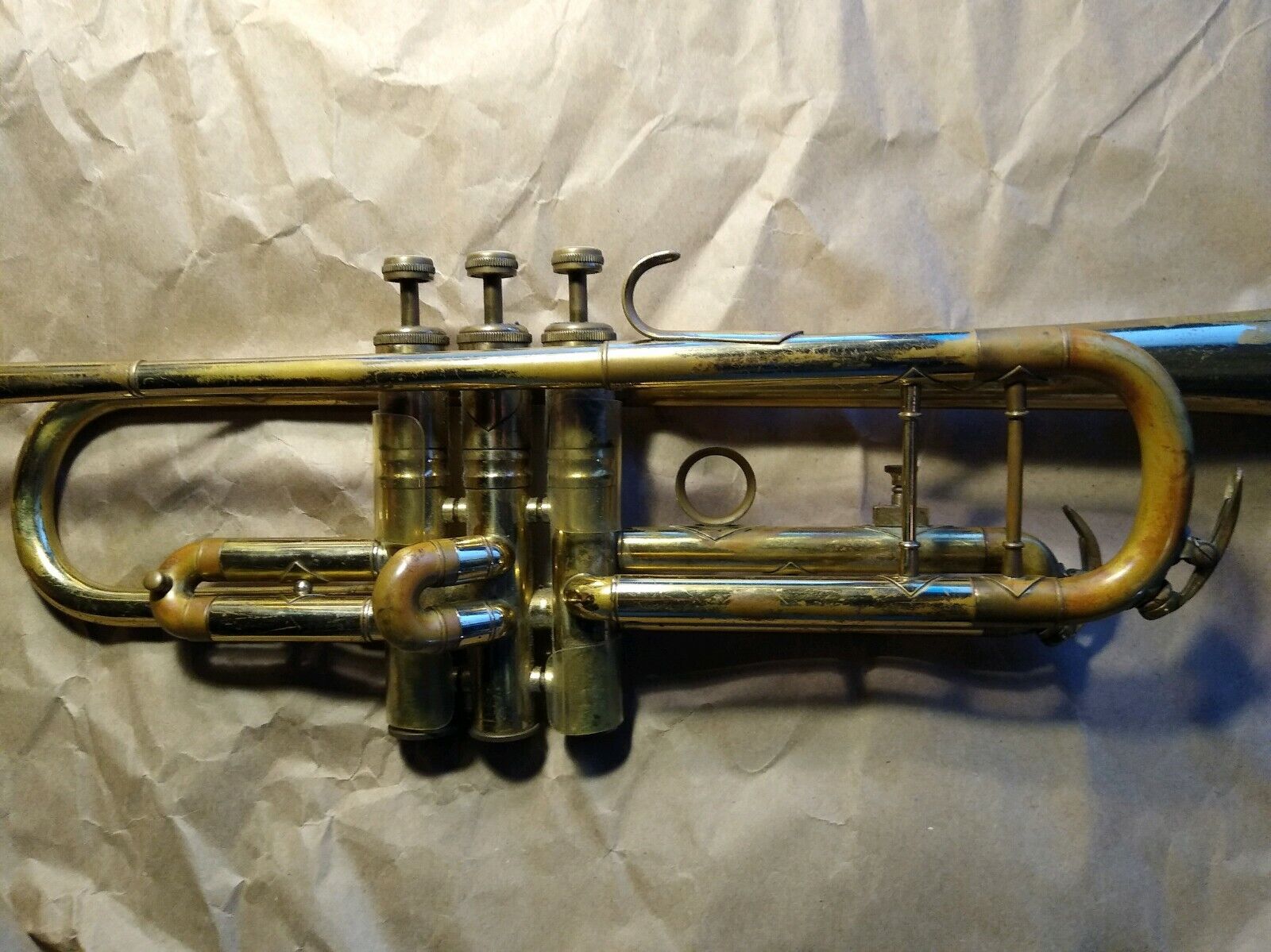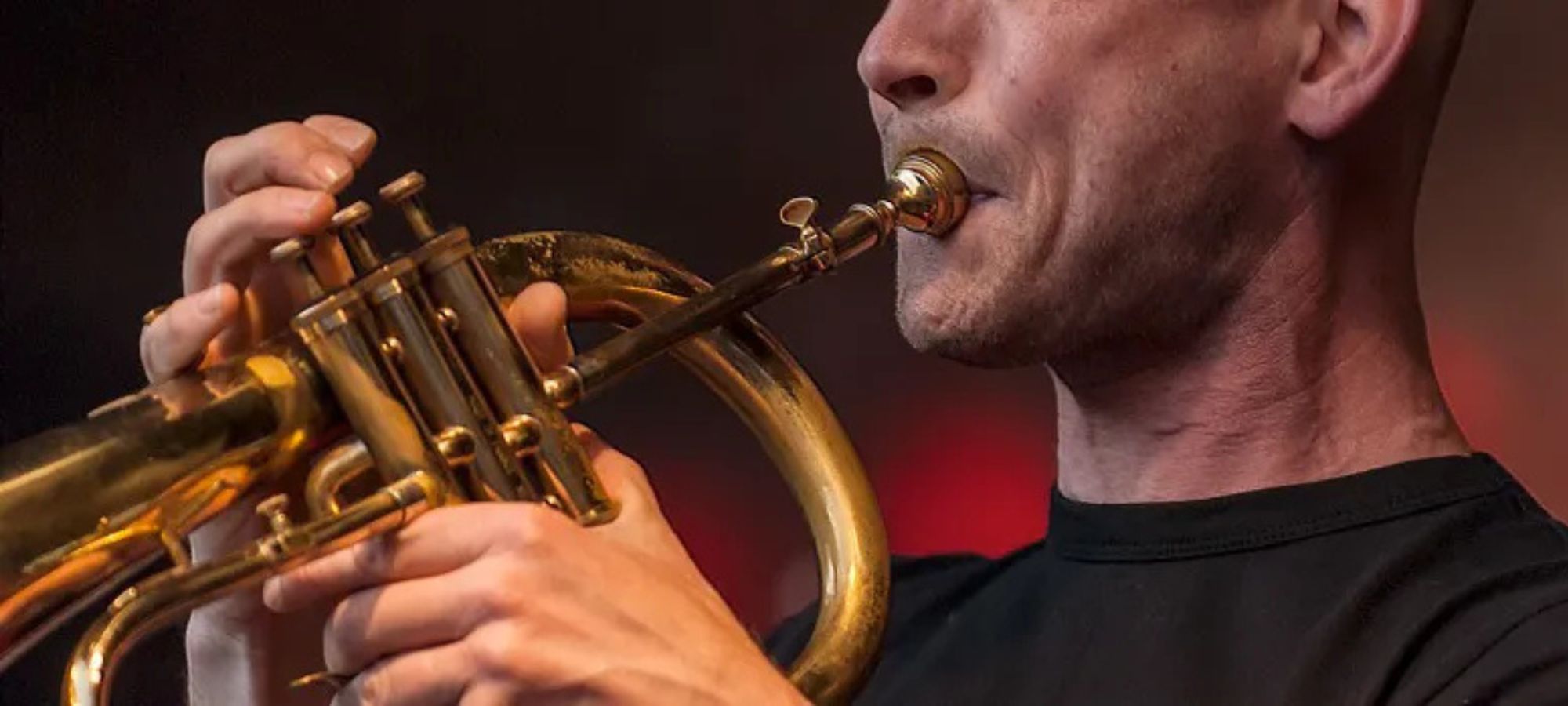Home>Instruments>Brass Instruments>Why Are Brass Instruments Usually Placed At The Back Of The Orchestra
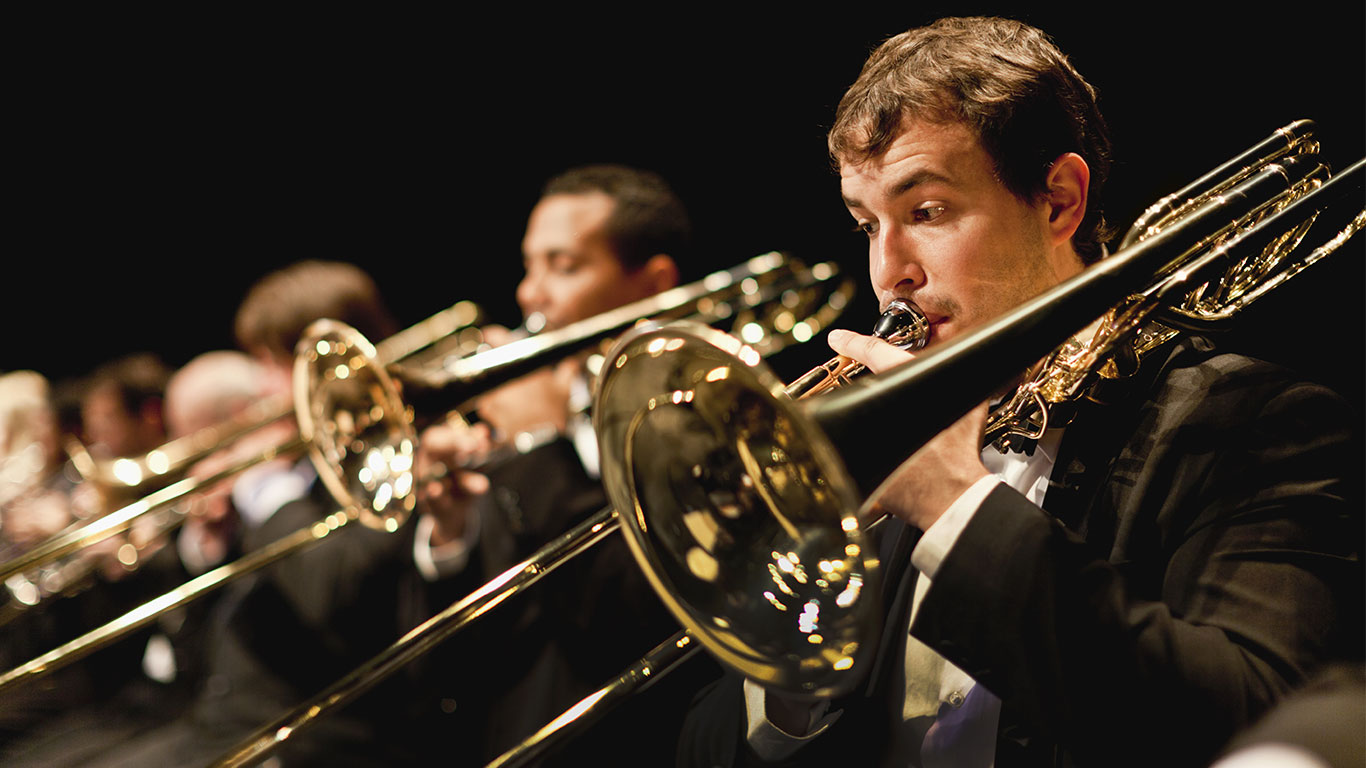

Brass Instruments
Why Are Brass Instruments Usually Placed At The Back Of The Orchestra
Modified: February 24, 2024
Discover why brass instruments are typically positioned at the rear of the orchestra. Gain insights into the unique sound projection and dynamic balance they offer.
(Many of the links in this article redirect to a specific reviewed product. Your purchase of these products through affiliate links helps to generate commission for AudioLover.com, at no extra cost. Learn more)
Table of Contents
Introduction
Brass instruments have long been a fundamental component of orchestras, providing rich, sonorous tones that add depth and character to musical performances. When you attend a symphony orchestra concert, you’ll often notice that brass instruments, such as trumpets, trombones, French horns, and tubas, are positioned at the back of the orchestra. But have you ever wondered why brass instruments are usually placed in this specific location?
Understanding the placement of brass instruments requires a deeper dive into the historical background, the acoustics of brass instruments, and the considerations that orchestras and conductors take into account.
In this article, we will explore the various factors that influence the placement of brass instruments in an orchestra. We will discuss the historical reasons, as well as the acoustical considerations behind this placement. Additionally, we will delve into the impact of brass instrument placement on balance, projection, and visual aesthetics within the orchestra.
So, whether you are a musician, a music lover, or simply curious about the inner workings of an orchestra, let’s embark on this fascinating exploration of why brass instruments are typically positioned at the back of the orchestra.
Historical Background
The placement of brass instruments at the back of the orchestra can be traced back to the origins of orchestral music. In the early days of orchestras, brass instruments were valued for their ability to play loud and powerful harmonies, making them ideal for outdoor performances and ceremonial music.
During the Baroque period, the orchestra was predominantly composed of string instruments, with brass instruments playing a secondary role. The strings were positioned at the front of the ensemble, closer to the audience, while the brass instruments were placed further back, often on elevated platforms.
As orchestras evolved, the role of brass instruments became more integral, especially during the Romantic period. Composers like Wagner, Mahler, and Bruckner heavily featured brass sections in their compositions, requiring a larger number of brass players and a more prominent position in the orchestra.
Furthermore, advancements in instrument design, such as the development of valves for brass instruments in the early 19th century, allowed for greater versatility and expressive capabilities. This led to increased demands on brass players and their instruments, necessitating their placement in a strategic position within the orchestra.
Over time, the tradition of placing brass instruments at the back of the orchestra became ingrained and is still prevalent in modern orchestras today. While there may be variations in the exact placement depending on the conductor and the specific venue, the historical background continues to influence the orchestral seating arrangements.
Next, we will explore the acoustical considerations that contribute to the placement of brass instruments in their customary position at the back of the orchestra.
Acoustics of Brass Instruments
To understand why brass instruments are typically placed at the back of the orchestra, it is essential to consider the unique acoustical properties of these instruments.
Brass instruments, made of brass or other metal alloys, produce sound through the vibration of the player’s lips against a cup-shaped mouthpiece. The sound is then amplified as it resonates through the instrument’s tubing. This process creates a distinct and resonant sound that carries well over long distances.
However, brass instruments also have the potential to overpower other sections of the orchestra due to their powerful and projecting sound. Placing them at the back of the orchestra helps to mitigate this potential imbalance and allows for better control over the overall sound production.
Furthermore, the placement of brass instruments at the back takes advantage of the principle of sound dispersion. When the sound waves generated by the brass instruments travel towards the audience, they can bounce off walls and surfaces, leading to a more dispersed and balanced sound in the concert hall.
Additionally, the position of brass instruments at the back of the orchestra allows for their sound to blend with the other sections more effectively. By being placed behind the strings and woodwinds, the sound of the brass instruments has the opportunity to merge seamlessly with the rest of the ensemble, resulting in a harmonious and unified sound.
Lastly, the distance between the brass instruments and the audience can also have an impact on the perceived sound quality. Placing the brass instruments at the back of the orchestra allows the sound to travel a greater distance before reaching the listeners’ ears. This can help create a more balanced and refined sound for the audience, as they are not directly exposed to the full intensity of the brass instruments.
Considering these acoustical aspects, it becomes clear why orchestras traditionally position brass instruments towards the rear of the ensemble. The balance, sound projection, and blending of the brass section with the rest of the orchestra are crucial factors that contribute to the overall sonic experience.
Next, let’s explore the various placement considerations that orchestras and conductors take into account when determining the specific arrangement of brass instruments within the orchestra.
Placement Considerations
The placement of brass instruments within an orchestra involves careful consideration by conductors and orchestral managers. While the general rule is for brass instruments to be positioned at the back, there are several factors that influence the specific arrangement:
- Physical Space: The size and layout of the concert hall or performance venue play a crucial role in determining the placement of brass instruments. Limited space may require adjustments in the arrangement to accommodate the entire orchestra.
- Balance and Blend: Achieving a balanced sound is critical in orchestrating a cohesive performance. Conductors consider the overall sonic texture of the orchestra, ensuring that the sound of the brass instruments blends well with the strings, woodwinds, and percussion sections.
- Projection and Sound Dispersion: Brass instruments are known for their ability to project sound over long distances. Placing them towards the back of the orchestra allows their sound to carry effectively throughout the concert hall while also promoting a more dispersed and balanced sound for the audience.
- Visual Aesthetics: The visual presentation of the orchestra is an important aspect of the performance. Brass instruments placed at the back allow the audience to see the movements and interactions of the conductor and other musicians in the front rows more clearly.
- Influence on Conducting: The placement of brass instruments affects the conductor’s ability to lead and communicate with different sections of the orchestra. Having the brass section at the back allows the conductor to have a better view of the entire ensemble and make necessary adjustments in dynamics and timing.
Ultimately, the placement of brass instruments in an orchestra involves a delicate balance of acoustics, aesthetics, and practical considerations. Each orchestra may have its own preferences and variations in placement, depending on the conductor’s vision and the unique characteristics of the venue.
By carefully considering these placement factors, orchestras aim to create a harmonious, well-balanced, and visually captivating performance that showcases the full potential of the brass section within the ensemble.
In the next section, we will explore the specific benefits and impact of positioning brass instruments at the back of the orchestra.
Balance and Blend
One of the primary considerations in the placement of brass instruments at the back of the orchestra is to achieve a balance and blend of sound within the ensemble. The positioning of brass instruments in relation to other sections of the orchestra plays a crucial role in creating a cohesive and unified sound.
Brass instruments, by their nature, produce a powerful and projecting sound. When positioned at the back, their sound has the opportunity to blend smoothly with the other sections, such as the strings, woodwinds, and percussion. This blending of sound allows for a well-rounded and balanced orchestral texture.
Placing the brass instruments in close proximity to the woodwind section, for example, can result in a seamless integration of timbres. The warm and mellow tones of the woodwinds can complement the vibrant and brilliant sound of the brass, resulting in a rich and harmonious combination.
Similarly, positioning the brass instruments behind the strings allows their sound to emerge from the foundation laid by the string section, enhancing the overall sonic depth and complexity of the music. The powerful resonance of the brass section can resonate with the sustained tones of the strings, creating a lush and vibrant orchestral sound.
Furthermore, the placement of brass instruments at the back of the orchestra helps prevent them from overpowering the other sections. By being positioned at a distance and often facing away from the audience, the full intensity of the brass sound is naturally tempered, allowing for a more balanced and nuanced blend with the rest of the ensemble.
Conductors play a crucial role in facilitating balance and blend within the orchestra. They carefully listen to each section and make adjustments in dynamics and expression to ensure that no one section overshadows the others. The placement of brass instruments at the back gives conductors a clearer view of the overall sound production, enabling them to make precise adjustments and maintain a well-balanced performance.
By focusing on balance and blend, orchestras strive to create a unified and cohesive sound that showcases the individual strengths of each section while preserving the collective beauty of the orchestra as a whole.
In the next section, we will explore the importance of projection and sound dispersion in the placement of brass instruments.
Projection and Sound Dispersion
Projection and sound dispersion are key considerations in placing brass instruments at the back of the orchestra. The unique sound characteristics of brass instruments, along with the architectural design of concert halls, play a vital role in determining the optimal placement for these instruments.
Brass instruments have the ability to project sound over long distances due to their design and the way sound waves are produced. Placing them at the back of the orchestra allows their sound to travel further before reaching the audience. This enhanced projection ensures the brass section’s sound reaches every corner of the concert hall, creating a balanced listening experience for the audience.
In addition to projection, sound dispersion is an important factor in achieving a well-balanced sound. When brass instruments are positioned at the back, the sound waves they produce bounce off walls and surfaces, creating a more dispersed sound. This dispersed sound blends with the sound from other sections of the orchestra, resulting in a more cohesive and immersive listening experience for the audience.
The architectural design of concert halls also influences the placement of brass instruments. Many concert halls are designed with acoustics in mind, incorporating features such as curved walls and balconies to optimize sound dispersion. The placement of brass instruments at the back takes advantage of these architectural elements, allowing for a more even distribution of sound throughout the venue.
Furthermore, the distance between the brass instruments and the audience affects the perceived sound quality. Placing the brass instruments at the back ensures that the audience does not experience an overpowering or excessively loud sound. Instead, the sound travels a greater distance before reaching the listeners’ ears, resulting in a well-balanced and refined sound experience.
Conductors and audio engineers work together to optimize projection and sound dispersion in the placement of brass instruments. They take into account the acoustical characteristics of the concert hall, the orchestral balance, and the desired overall sound to determine the precise positioning of the brass section.
By carefully considering projection and sound dispersion, orchestras aim to create a balanced and immersive sound experience for the audience, ensuring that the full range and dynamism of the brass instruments are showcased within the context of the entire orchestra.
In the next section, we will explore the visual aesthetics and the impact of brass instrument placement on conducting.
Visual Aesthetics
The placement of brass instruments at the back of the orchestra also has a significant impact on the visual aesthetics of a performance. The arrangement of musicians on stage creates a visually captivating experience for the audience, enhancing the overall presentation of the orchestra.
From an aesthetic standpoint, having the brass instruments positioned towards the rear of the ensemble allows for a clearer line of sight for the audience. When seated further back, the audience can better observe the movements, interactions, and expressions of the conductor and musicians in the front rows. This visual connection enhances the overall engagement and enjoyment of the performance.
Additionally, having the brass section placed towards the back creates a dynamic visual balance within the orchestra. The front rows are often occupied by the string and woodwind sections, which might have more intricate and delicate melodic passages. Placing the visually larger and more physically commanding brass instruments at the back helps to create a visually pleasing arrangement that complements the overall orchestral composition.
Furthermore, the movement and choreography of musicians on stage become more visually striking with the brass instruments positioned at the back. The sound produced by brass instruments often coincides with grand moments in the music, and the ability to see the visual impact of their playing adds an extra layer of excitement and drama to the performance.
Orchestral performances are not solely about the auditory experience but also about creating an immersive and captivating visual presentation. By strategically placing the brass instruments at the back, conductors and orchestral managers enhance the visual aesthetics of the performance, providing an engaging and memorable experience for the audience.
Now that we have explored the significance of visual aesthetics in brass instrument placement, let us move on to the influence that this placement has on conducting.
Influence on Conducting
The placement of brass instruments at the back of the orchestra has a direct influence on the conducting of an ensemble. The conductor plays a vital role in shaping the interpretation and performance of a piece of music, and the positioning of the brass section affects their ability to effectively lead and communicate with the orchestra.
By having the brass instruments positioned towards the rear, conductors have a clear view of the entire orchestra. This vantage point allows them to observe and cue all sections, including the woodwinds, strings, and percussion, ensuring precise timing, dynamics, and expression throughout the performance.
The ability to see the brass section clearly from afar enables conductors to gauge their sound intensity and make necessary adjustments as the music unfolds. Conductors can observe the movements, breathing, and technical execution of the brass players, allowing them to provide guidance and shape the overall sound of the section in real-time.
The placement of the brass instruments at the back also allows conductors to maintain a balanced sound within the ensemble. They can listen to the brass section in relation to other sections and make adjustments in dynamics and balance accordingly. This ensures that no one section overpowers the others, creating a cohesive and well-blended orchestral sound.
Additionally, the positioning of the brass section at the back provides conductors with an enhanced visual connection to the entire ensemble. They can easily observe the interactions, cues, and nuances happening between the musicians on stage, leading to better coordination and synchronization of musical elements.
The influence on conducting extends beyond the visual aspect. Conductors can rely on their experience and knowledge of the specific placement and sound characteristics of the brass instruments to guide their interpretation of the music. They can anticipate the sound projection and balance of the brass section and make informed decisions on how to shape the overall performance.
Overall, the placement of the brass instruments at the back of the orchestra enables conductors to have a comprehensive view of the ensemble and make critical musical decisions. It empowers them to lead and shape the performance, ensuring a cohesive and expressive interpretation of the music.
Now that we have explored the influence of brass instrument placement on conducting, let’s summarize our findings in the concluding section.
Conclusion
The placement of brass instruments at the back of the orchestra is a longstanding tradition that is rooted in historical, acoustical, and practical considerations. Understanding why brass instruments are positioned in this specific location provides insight into the intricacies of orchestral performances.
Historically, the placement of brass instruments at the back can be linked to their role as secondary components in earlier orchestras. As brass instruments gained prominence and composers emphasized their sound, the tradition of positioning them at the back continued to evolve.
The acoustical properties of brass instruments also contribute to their placement. Their projecting sound and ability to blend with other sections make them ideally suited for the rear position, ensuring a balanced and unified orchestral sound. Moreover, their placement takes advantage of sound dispersion and enhances the overall projection within the concert hall.
Practical considerations, such as physical space and visual aesthetics, also come into play. The arrangement of the orchestra not only enhances the visual experience for the audience but also provides conductors with a clear view of the entire ensemble, enabling effective leadership and communication.
The placement of brass instruments at the back of the orchestra is a deliberate decision that takes into account the balance and blend of sound, projection and sound dispersion, visual aesthetics, and the conductor’s role. It contributes to creating a harmonious and captivating orchestral performance.
While variations in placement may exist based on specific venues and conductor preferences, the tradition of having brass instruments at the back remains a consistent element in orchestra seating arrangements.
Understanding the reasons behind the placement of brass instruments at the back of the orchestra offers a deeper appreciation for the complexities and artistic considerations involved in orchestral performances. It enhances the listener’s experience and allows us to fully immerse ourselves in the beautiful world of orchestral music.

